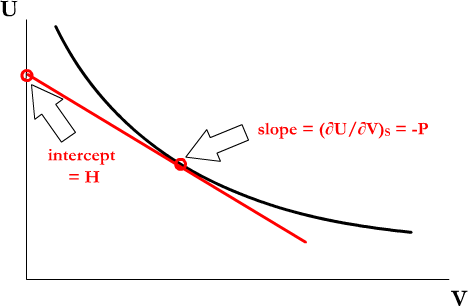Enthalpy $H$ is defined so that $\Delta H = q_P$, the heat at constant pressure. This is convenient for constant-pressure calorimetry---it makes it possible to track energy changes without considering volume changes in the system.
$$\begin{align*}\Delta U &= q + w & \text{(first law)}\\
\Delta U_P &= q_P + w_P & \text{(constant pressure)}\\
\Delta U_P &= \Delta H + w_P & \text{(definition of enthalpy)}\\
\end{align*}$$
...so the difference between $\Delta H$ and $\Delta U$ can be interpreted as minus the work for a constant pressure process.
But this doesn't answer your question for a general process. If the process is not constant pressure, we can still apply the definition of enthalpy, but the difference isn't minus the expansion work anymore. But what is it, then? How can we use something we've defined for a constant pressure process for all processes in general?
We'd like a new thermodynamic function $H$ that includes all of the information in $U$. We have $$dU = TdS - PdV$$ so the natural variables of $U$ are $S$ and $V$. We want this new function $H$ to have $P$ as a natural variable in place of $V$, so it will be convenient for constant-pressure calorimetry. Consider the following plot of $U$ vs. $V$:

The equation for the tangent line at some value of $V$ is
$$ U = \left(\frac{\partial U}{\partial V}\right)_S V + intercept$$
If we define the new function as the intercept of the tangent line shown in the graph, it will have the properties we need:
$$H \equiv U - \left(\frac{\partial U}{\partial V}\right)_S V$$
You can see that the derivative $\left(\dfrac{\partial U}{\partial V}\right)_S = -P$ from the equation for $dU$ above. Then
$$H \equiv U - (-P) V = U + PV$$
so
$$dH = dU + d(PV) = TdS - PdV + PdV + VdP = TdS + VdP$$
By adding $PV$ to $U$, we've transformed the information in $U$ (with natural variables $S$ and $V$) to a new function $H$ (with natural variables $S$ and $P$).
This trick is called a Legendre transformation, and it can be used to understand the definitions of other thermodynamic functions like $G$ and $A$ as well.

